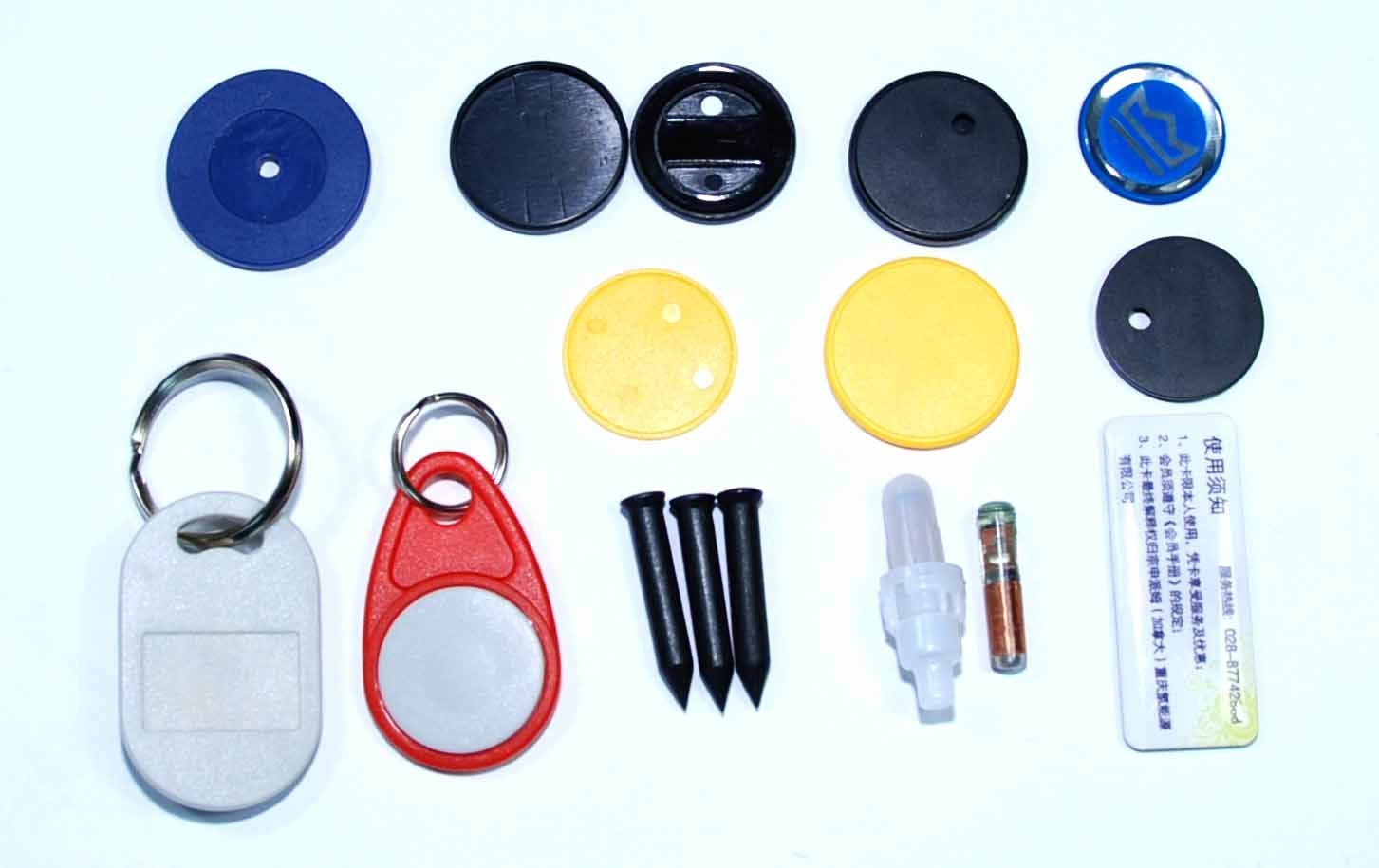


A secure, affordable and reliable method of uniquely identifying assets and stock is by the use of RFID tags, RFID the acronym meaning ‘Radio Frequrency Identification’. These tags can be active or passive and they operate on a set range off frequencies from Low Frequency (LF) to Ultra High Frequency (UHF), each technology and frequency offering different performance characteristics and costs that allow the selection of a tag to be optimised by the user according to the demands of the task that it is to be used for.
Passive tags are energised by the device that is scanning them, they can transmit their position and information stored on them only a few metres, they are low cost devices. The actual read range is determined to a large extent by the quality of the scanner being used to read it, some manufacturers incorporate an add on device to their scanners which can dramatically increase the read range. For example with the correct scanning equipment selected for the tag a read range of a few metres is possible and tags can be identified even when in a plastic locker.
Active tags have a far greater range, up to 2000 metres in optimum conditions, they are more expensive as the tags need an onboard battery which has the added disadvantage of making them larger and heavier than passive tags.
The design and software architecture of our AR-Mobile module allows the use of various identification technologies, it is an easy matter to swap the identifying barcode of an item for a passive or active RFID tag, all can be read using the same scanning device. The choice of tag technology is transparent to the AR-Mobile software.
Our customers have used RFID tags to identify a vast range of assets and stock items, stock includes packs of timber at a leading port authority, archive document storage boxes, tooling for the food and aerospace industries, leather and footwear products and textiles that are washed in a commercial laundry. The list of what can be tagged is endless, if the substrate is large enough it can be tagged and if the material of the item allows the tag can be hidden within the structure of it. An enormous range of assets have been tagged to allow for identification and location when required.
Televisions and other electrical items in sheltered housing have been tagged to track and prevent their movement off of site, safety items within vehicles have been tagged so that a scan of the inside of a vehicle can determine whether all of the necessary equipment is present. Once again the range of items that can be tagged is immense and there is usually a tag and scanner that can be matched to any task. Tags have been produced and used for the laundry industry where they have to withstand constant washing cycles at high temperatures, and scanners that can read all tags in textile items travelling along a conveyor belt at high speed are deployed to read them.
Tags are available encapsulated in various substances, for example Kevlar, for use in a huge variety of harsh environments and scanners to read these tags are available to use in all manner of environments, explosion proof ones for oil and gas through to high rated IP waterproof ones for outside use in areas where soaking with water is common place.
These are some examples of RFID tags


These are some examples of RFID Readers



RFID reading does not require line of site

Certain RFID tags can operate in harsh environments

Tags can store data and you can read / write multiple times

You can read multiple RFID Tags at once, allowing faster data collection.